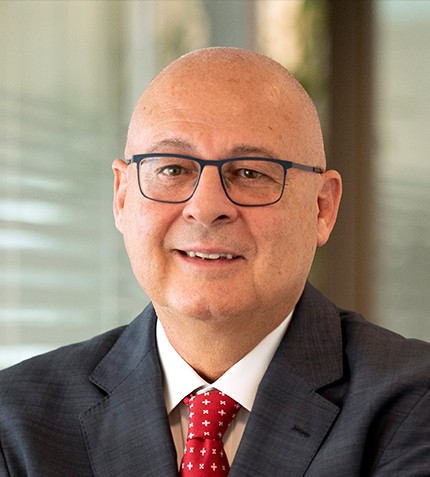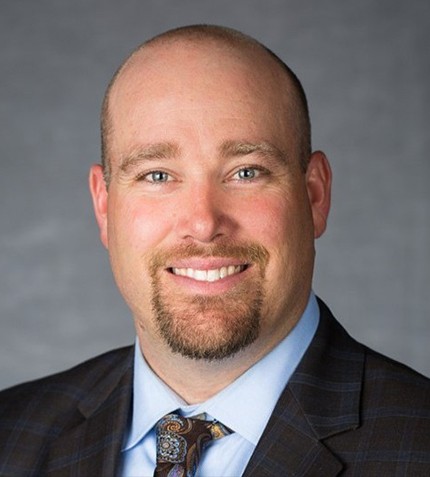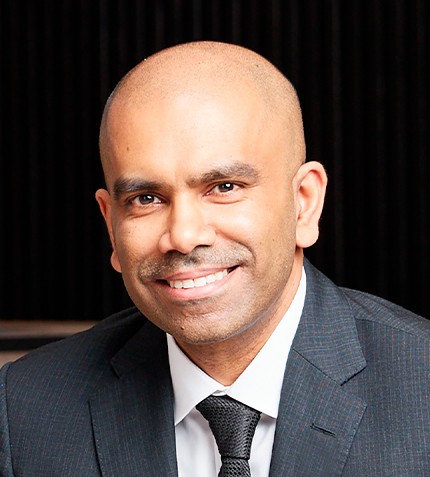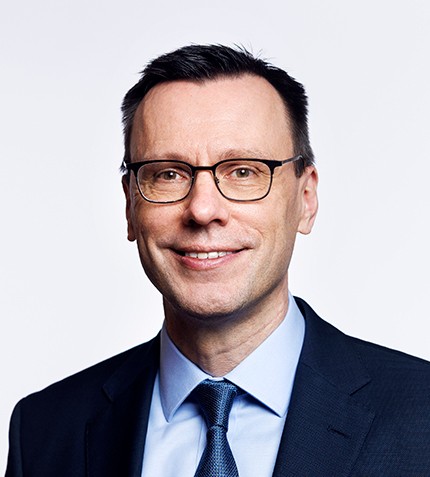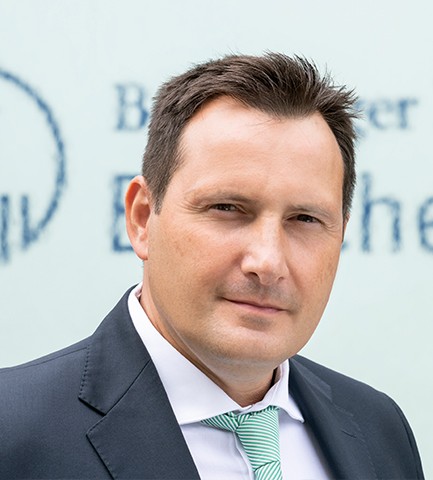
"we are convinced that having a mix of different generations in our company brings added value to our business for the future."
Maurizio Sartorato
CEO BIDACHEM SPA
Can you introduce Bidachem and explain its position within the Boehringer Ingelheim Group?
Boehringer Ingelheim is an innovative family-owned company with 135 years of experiece. The key to our success is found in the ability to continuously adapt and introduce new products and technologies. The Group, one of the pharmaceutical industry’s top 20 companies, operates in three main businesses: animal health, human pharma and biopharmaceutical for contract manufacturing. As a family-owned company, generations are rooted in our “Leitbild”. Embracing sustainable development, social and environmental engagement has always been part of this generational approach and of our legacy. In the journey towards excellence our “Sustainable Development for Generations” delivers long-term economic and social value to our patients, stakeholders, employees and the communities that we serve..
Within the Group, Bidachem’s APIs cover five out of Boehringer Ingelheim’s seven therapeutic areas in human pharma: we produce APIs for cardiovascular diseases (dabigatran), metabolic diseases (empagliflozin, linagliptin), respiratory diseases and oncology (nintedanib) and for immunology (early stage product). Boehringer Ingelheim is also active in CNS and retinal health therapeutic areas.
Our working model follows the life cycle philosophy: we invest in innovative products, industrialization of new technologies and in the optimization of our processes to fulfil a sustainable business growth. In this sense, we act as an internal, special CDMO.
What are the advantages of operating in Lombardy?
Lombardy accounts for over 50% of Italy’s total API output. Bidachem benefits from both internal and external competencies, leveraging on a highly qualified workforce thanks to the presence of specialized professional schools and universities, and the support of other companies supplying the latest and most innovative technologies and services. Located in a strategic logistic area, we also have good transport links and excellent access to shipping.
Bidachem continued investments in 2020. Can you share what are these directed to?
Bidachem invests approximately 15 million euros every year for business, safety and sustainable growth – encompassing our people, the environment, and best technologies to improve the cost performance of our products. Over the last 10 years, we invested 130 million euros, and we will maintain the same annual averages to meet the evolving needs of our patients and stakeholders. Specifically, last year we invested in a new line of production for empagliflozin. This investment will amount to 10 million euros and should be completed by 2021. In 2019, we inaugurated a new high containment micronization plant. In addition, in 2018 we invested in a new laboratory for quality control which allows us to provide an additional service to the Group: the analysis and the release of milled APIs manufactured by Bidachem and not only.
Bidachem plays a key role in the supply chain of the Group.
Could you elaborate on Bidachem’s focus in youth employement and employer mobility?
Boehringer Ingelheim invests in all its employees, especially in young people. The pharma sector is growing, and we must invest in our youth to make sure of the availability of talent in future years. In 2019, Bidachem hired 240 people, a number which will go up to 270 by 2022. We have many young people joining the team, we are working closely with them and foster their skills, especially in management roles.
Bidachem is celebrating its 40-year anniversary in 2021. What are the company’s future objectives?
Our aim at Bidachem is to maintain our leadership in engineering, chemistry, quality and safety, by implementing the last technologies at our plants, but also leveraging, in future, big data and AI to maximize our performance in terms of quality and costs. Our efforts are geared towards promoting automation and digitalization, which will allow workers to transit into higher-value positions rather than doing repetitive tasks, better served by a machine. We can make better use of both human and software/ robotic capabilities. Based on variability studies, batches produced in an automated fashion yield more standardized results. Finally, we are very focused also on sustainability, having recently invested in a new thermal oxidizer at our plant, classified among the best available technologies, ready by the end of this year and which will allow us to further minimize the environmental impact.




